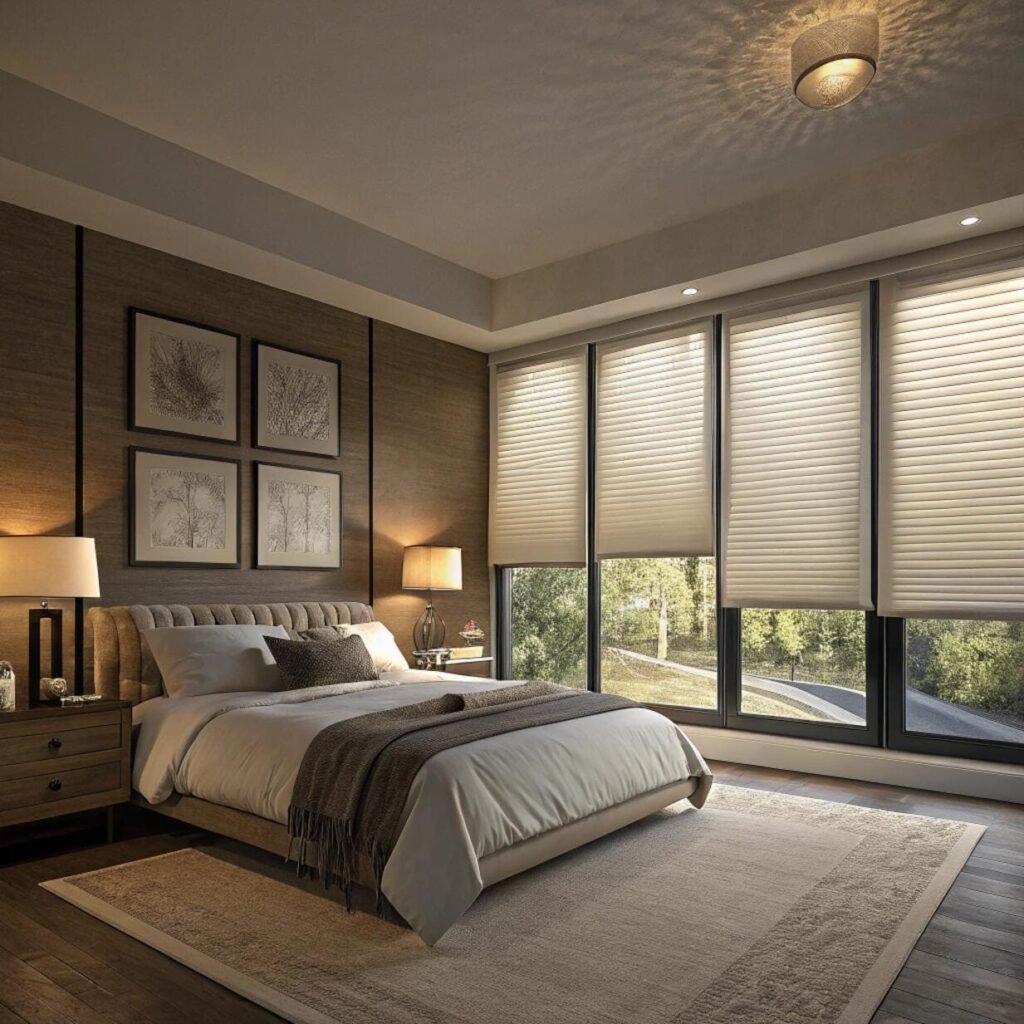Choosing the wrong blind mounting method can ruin your project's aesthetics, cause light gaps, and create costly reinstallation headaches.
Inside mount blinds fit within the window frame for a clean, built-in look, while outside mount blinds attach to the wall or frame exterior, offering better light control and coverage but with more visible hardware.

After helping hundreds of project buyers navigate this critical decision, I've learned that the mounting method impacts everything from light control to final aesthetics. Let me walk you through the key factors that determine which approach works best for your specific project requirements.
How to Choose Inside or Outside Mount Blinds?
Most buyers rush this decision without considering the technical requirements and long-term implications.
Choose inside mount when you have sufficient window depth (at least 3 inches), want a clean built-in appearance, and prioritize aesthetics. Select outside mount when maximizing light control, covering architectural flaws, or working with shallow windows.
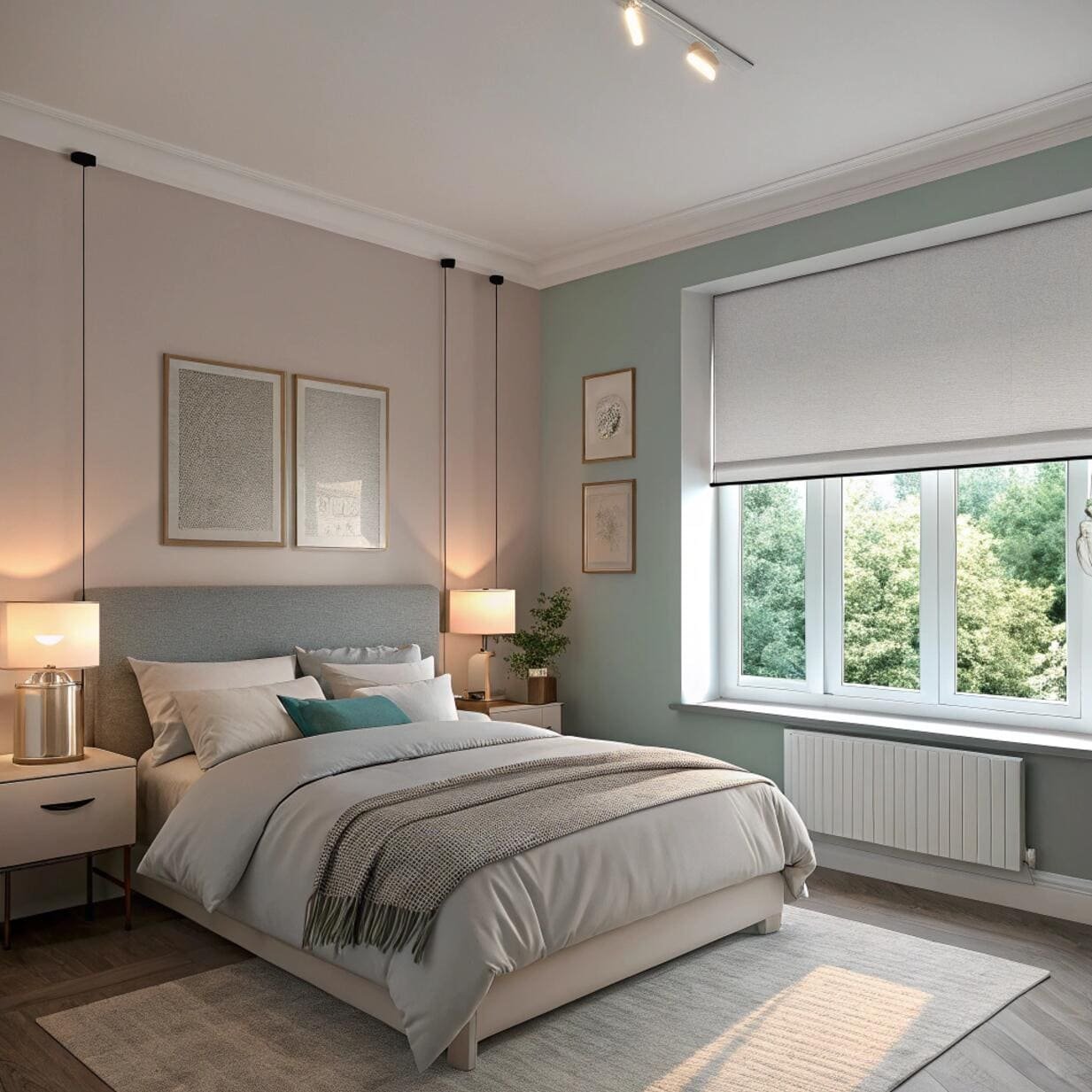
The decision between inside and outside mount depends on several critical factors that directly impact your project's success. Window frame depth is the primary technical constraint - inside mount requires minimum 2.5-3 inches of depth for proper blind clearance, while outside mount works with any window configuration.
Light control performance differs significantly between mounting methods. Inside mount[^1] blinds allow light gaps around the frame perimeter, potentially reducing blackout effectiveness by 15-20%. Outside mount blinds extend beyond the window frame, creating superior light seal and blocking capabilities.
Installation complexity varies considerably. Inside mount requires precise measurements within 1/8 inch tolerance, as any sizing errors result in gaps or operational issues. Outside mount[^2] offers more flexibility with measurements, allowing up to 1/4 inch variance while maintaining proper function.
Cost implications extend beyond initial purchase price. Inside mount failures often require complete blind replacement, while outside mount adjustments can typically be resolved with hardware modifications. Professional installation costs are generally 20-30% higher for inside mount due to precision requirements and potential complications.
| Factor | Inside Mount | Outside Mount |
|---|---|---|
| Window Depth Required | 3+ inches | Any depth |
| Light Control | Moderate (frame gaps) | Superior (full coverage) |
| Aesthetic Impact | Clean, built-in look | More visible hardware |
| Installation Tolerance | ±1/8 inch | ±1/4 inch |
| Cost Risk | High (replacement needed) | Low (adjustable) |
Do Blinds Look Better Inside or Outside the Window?
Visual appeal depends on your design priorities and architectural context, but many buyers make emotional decisions without considering practical implications.
Inside mount blinds create a cleaner, more integrated appearance that preserves window trim visibility, while outside mount blinds offer a more substantial, custom look but may overwhelm smaller windows.
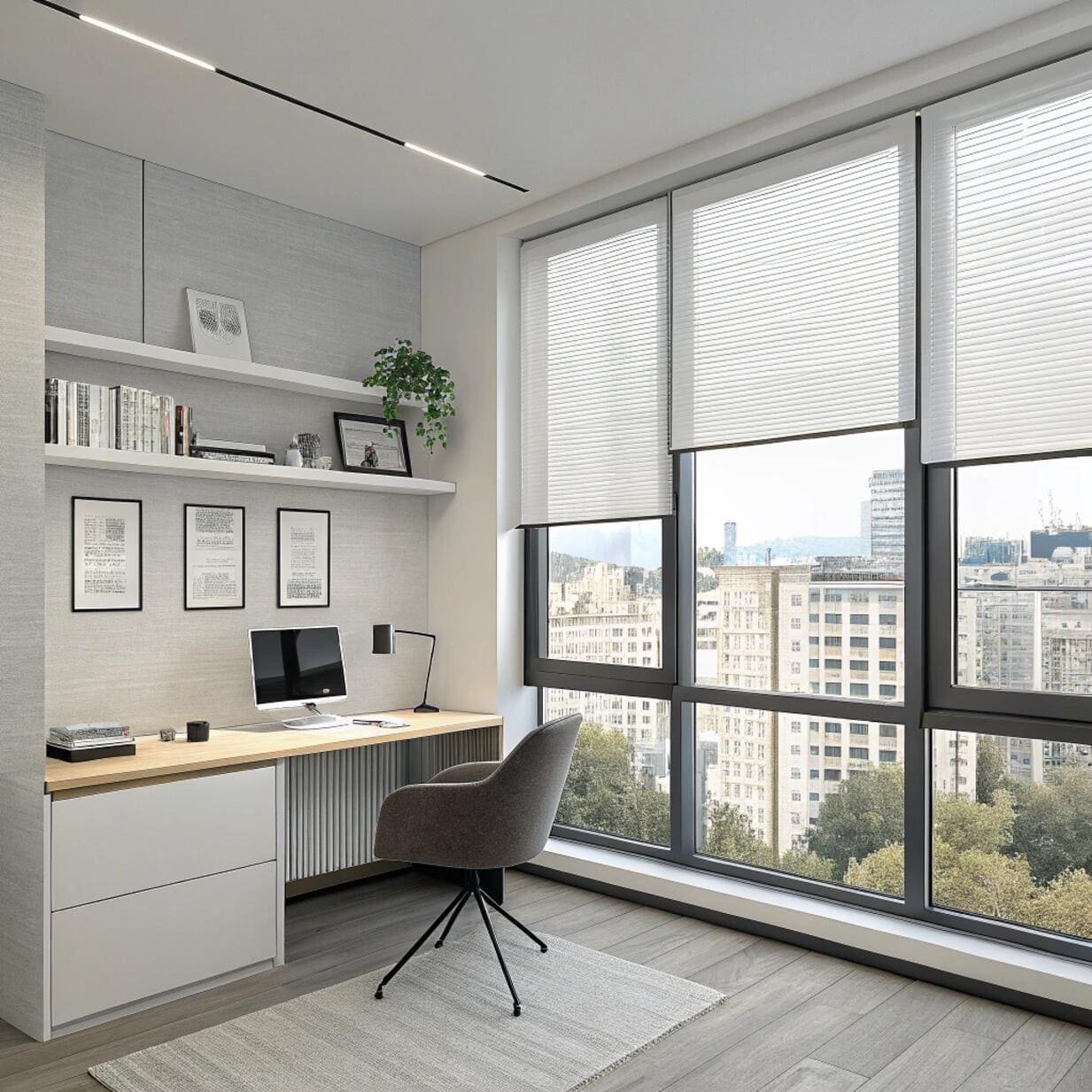
From an aesthetic standpoint, inside mount blinds provide a seamless, built-in appearance that architectural purists prefer. The blind appears to be part of the window structure rather than an added element. This approach works particularly well in traditional and transitional spaces where preserving original window trim and proportions is important.
Outside mount blinds create a more dramatic, substantial appearance that can actually enhance window proportions. When properly sized, they make windows appear larger and more prominent. This effect is particularly valuable in contemporary and modern spaces where bold, geometric elements are desired.
Scale relationships matter significantly. Inside mount blinds on small windows maintain proportional harmony, while outside mount on the same windows might appear oversized. Conversely, inside mount blinds on large windows can look undersized and lost within the frame opening.
Color and material choices interact differently with each mounting method. Light-colored inside mount blinds blend with window trim, creating continuity. Dark inside mount blinds can create a receding effect, making windows appear deeper. Outside mount blinds offer more flexibility for contrast and statement-making, as they're not constrained by existing trim colors.
The surrounding architecture influences which approach looks better. Crown molding, window headers, and adjacent elements all affect the visual balance. Inside mount works well with detailed trim work, while outside mount can bridge architectural inconsistencies between windows.
Should Inside Mount Blinds Be Flush with the Wall?
Proper positioning affects both function and appearance, but many installers get this wrong.
Inside mount blinds should sit 1-2 inches inside the window frame, not flush with the wall, to ensure proper operation and prevent interference with window trim and hardware.
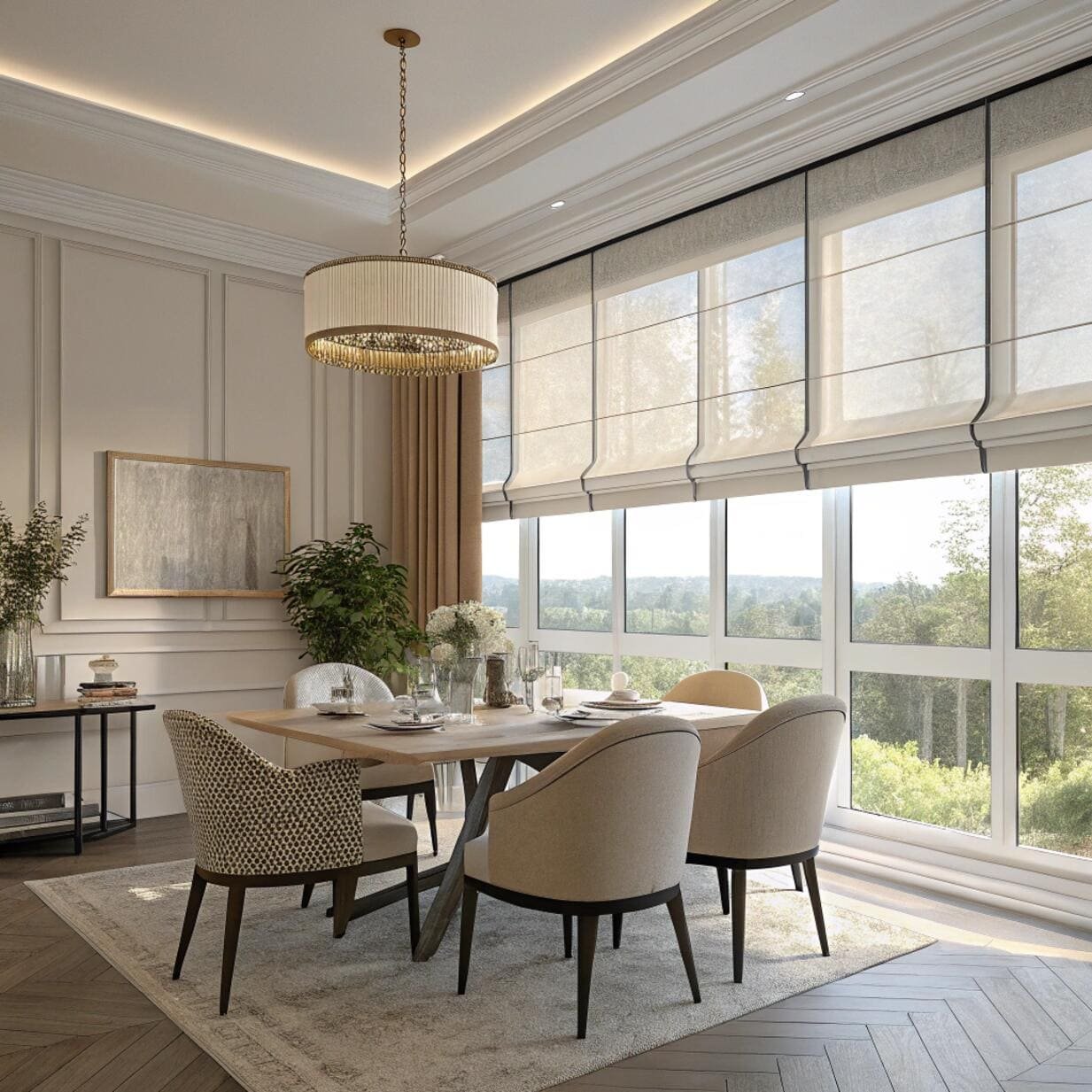
The positioning of inside mount blinds requires careful consideration of multiple factors. Sitting too far forward (flush with wall) creates several problems: interference with window trim, reduced light control effectiveness, and potential operational issues when windows are opened.
Optimal positioning places the blind face 1-2 inches inside the window frame opening. This positioning ensures adequate clearance for window operation while maintaining the clean, integrated appearance that inside mount provides. The exact depth depends on window type and operating mechanisms.
Technical considerations include window handle clearance, casement window swing paths, and screen interference. Casement windows require additional clearance - typically 3-4 inches - to accommodate the window swing without hitting the blind. Double-hung windows need clearance for sash movement and lock mechanisms.
Trim interference is a common installation mistake. Blinds positioned too close to the wall can bind against decorative trim, causing operational problems and potential damage. Professional installers always check trim profiles and adjust positioning accordingly.
The depth positioning also affects light control performance[^3]. Blinds positioned too far back in the frame create shadows and light gaps that reduce privacy and energy efficiency. The optimal position balances clearance requirements with light control effectiveness.
Mounting bracket selection varies based on positioning requirements. Standard brackets work for most applications, but extended brackets may be needed for specific window configurations or trim profiles. Professional-grade brackets offer adjustment capabilities that allow fine-tuning after installation.
Is It Better to Install Blinds Inside a Window Frame?
The answer depends on your specific project requirements and constraints, but many buyers don't consider all factors.
Inside mount installation is better when you have adequate window depth, want a clean aesthetic, and don't need maximum light control. Outside mount is better for superior light blocking, shallow windows, and covering architectural issues.
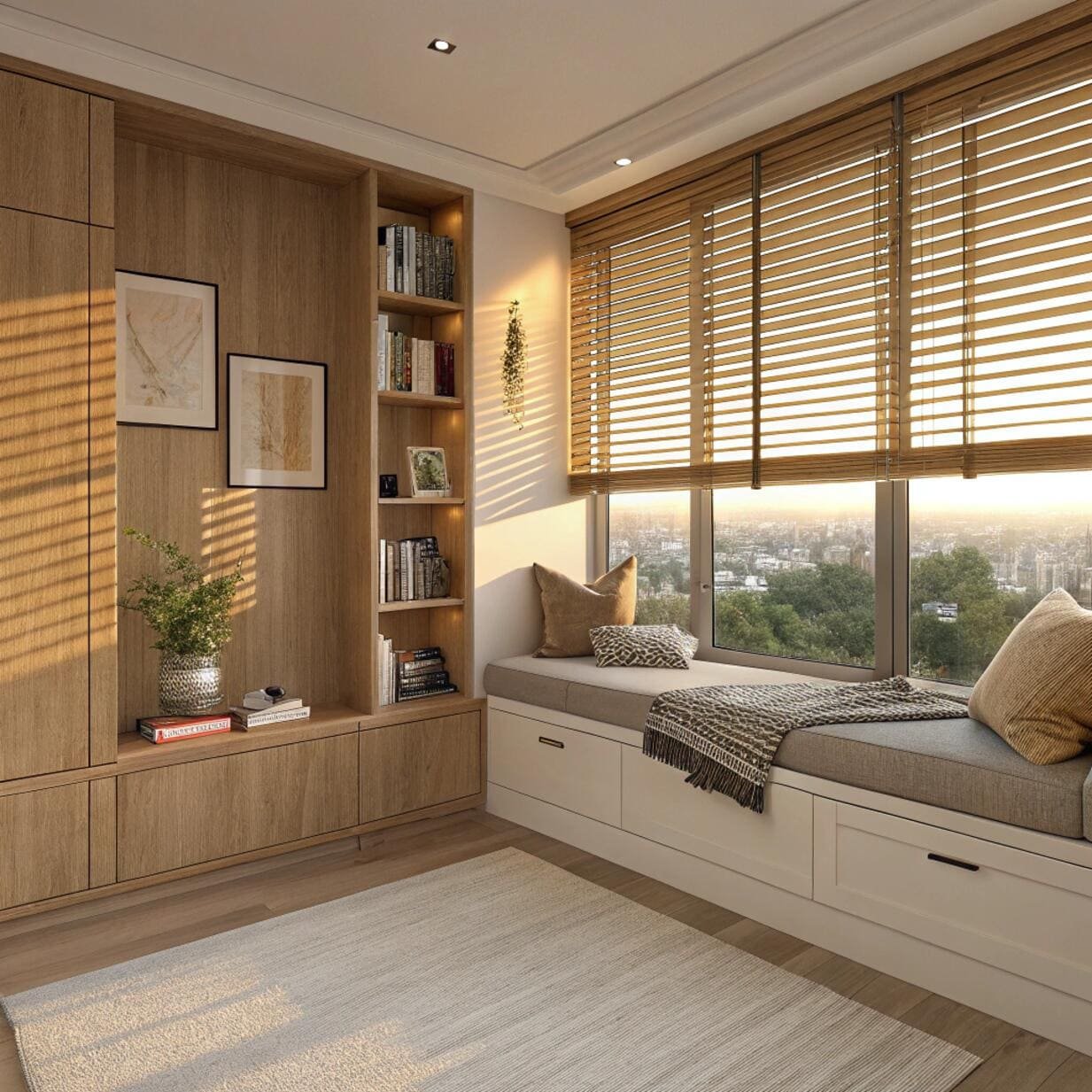
Inside mount installation offers several distinct advantages that make it preferable for many applications. The primary benefit is aesthetic integration - the blind appears to be part of the window architecture rather than an added element. This integration preserves the window's original proportions and trim work.
Maintenance advantages include reduced dust accumulation on the blind headrail, as it's protected within the window frame. The recessed position also provides some protection from accidental damage during routine cleaning and furniture movement.
However, inside mount installation has significant limitations that buyers must consider. Window depth requirements eliminate many older homes and apartments where windows lack sufficient frame depth. Measurement precision becomes critical - even small errors result in operational problems or light gaps.
Light control limitations are inherent to inside mount installation. The blind cannot extend beyond the window frame, creating inevitable light gaps around the perimeter. These gaps can be particularly problematic in bedrooms or media rooms where complete darkness is desired.
Installation complexity increases with inside mount, requiring more precise measurements and potentially more skilled installers. The confined space makes installation more challenging and time-consuming. Motorized blinds add additional complexity due to power cord routing and motor clearance requirements.
Cost considerations include higher failure rates due to measurement errors, increased installation time, and limited adjustment capabilities after installation. Professional installation becomes more important, adding to overall project costs.
Future modification flexibility is limited with inside mount. Changes to window hardware, screen additions, or storm window installation can interfere with inside mount blinds, requiring complete reinstallation.
Do Inside or Outside Mount Blinds Block More Light?
Light control performance varies significantly between mounting methods, affecting both energy efficiency and privacy.
Outside mount blinds block more light by extending beyond the window frame, eliminating perimeter gaps. Inside mount blinds allow light leakage around the frame, reducing light blocking effectiveness by 15-20%.

Light blocking performance depends primarily on coverage area and gap elimination. Outside mount blinds extend beyond the window frame by 2-4 inches on all sides, creating a light seal that inside mount cannot achieve. This extended coverage eliminates the primary source of light leakage in inside mount installations.
The physics of light control favors outside mount configuration. Light travels in straight lines and will find any gap or opening. Inside mount blinds, constrained by the window frame dimensions, cannot eliminate the natural gaps between blind and frame. These gaps allow light infiltration that reduces privacy and energy efficiency.
Quantitative testing shows outside mount blinds achieve 90-95% light blocking effectiveness, while inside mount blinds typically achieve 75-85% effectiveness. The difference becomes more pronounced with certain blind types and window configurations.
Window frame irregularities compound the light control differences. Older windows with uneven frames create larger gaps with inside mount blinds. Outside mount blinds bridge these irregularities, maintaining consistent light seal regardless of frame condition.
Blackout applications require maximum light control, making outside mount the preferred choice for bedrooms, media rooms, and conference areas. The superior light blocking directly impacts sleep quality, screen visibility, and energy costs.
Side light control can be enhanced with outside mount blinds using side channels or returns. These optional features completely eliminate side light gaps, achieving near-complete darkness when needed. Inside mount blinds cannot accommodate these enhancements.
Seasonal light control variations also favor outside mount. Summer sun angles create different light patterns than winter angles. Outside mount blinds provide consistent control regardless of seasonal changes, while inside mount performance can vary with sun position.
How Deep Does a Window Need to Be for Inside Mount Blinds?
Window depth requirements vary by blind type and operational needs, but minimum standards apply across all applications.
Windows need minimum 2.5-3 inches of depth for inside mount blinds, with motorized blinds requiring 3.5-4 inches. Actual requirements depend on blind type, bracket specifications, and window hardware clearance needs.

Depth requirements vary significantly across different blind types and operational mechanisms. Standard manual blinds require 2.5-3 inches of depth, measured from the glass surface to the interior edge of the window frame. This measurement must account for both the blind mechanism and clearance for proper operation.
Motorized blinds require additional depth to accommodate motors and power connections. Battery-powered motors typically add 1-2 inches to depth requirements, while hardwired motors may require even more clearance. The motor placement affects both depth and width requirements, as some configurations place motors at the blind ends rather than the center.
Window hardware creates additional depth constraints. Window locks, handles, and cranks can interfere with blind operation if not properly considered. Casement windows with interior cranks may require 4-5 inches of depth to ensure blind clearance during window operation.
Measurement accuracy becomes critical with inside mount installations. A window measuring exactly 3 inches deep may not accommodate a blind requiring 3 inches, due to measurement tolerances and installation variations. Professional installers typically recommend 0.5-inch minimum clearance beyond stated requirements.
Blind type specifications affect depth requirements differently:
| Blind Type | Minimum Depth | Recommended Depth |
|---|---|---|
| Roller Blinds | 2.5 inches | 3 inches |
| Cellular Shades | 2.75 inches | 3.25 inches |
| Venetian Blinds | 3 inches | 3.5 inches |
| Motorized Blinds | 3.5 inches | 4 inches |
Stack height considerations apply to blinds that gather when raised. Cellular shades and roman blinds create significant stack height that must be accommodated within the window frame. This stack height reduces the usable window area when blinds are raised.
Professional measurement services eliminate guesswork and costly mistakes. Many suppliers offer measurement verification services that ensure proper fit before manufacturing. This service is particularly valuable for inside mount installations where precision is critical.
What Are the Pros and Cons of Inside vs Outside Mount Blinds?
Understanding the complete picture helps buyers make informed decisions based on their specific project requirements and constraints.
Inside mount offers clean aesthetics and integration but requires specific window depths and provides limited light control. Outside mount provides superior light blocking and universal fit but creates more visible hardware and potential aesthetic challenges.
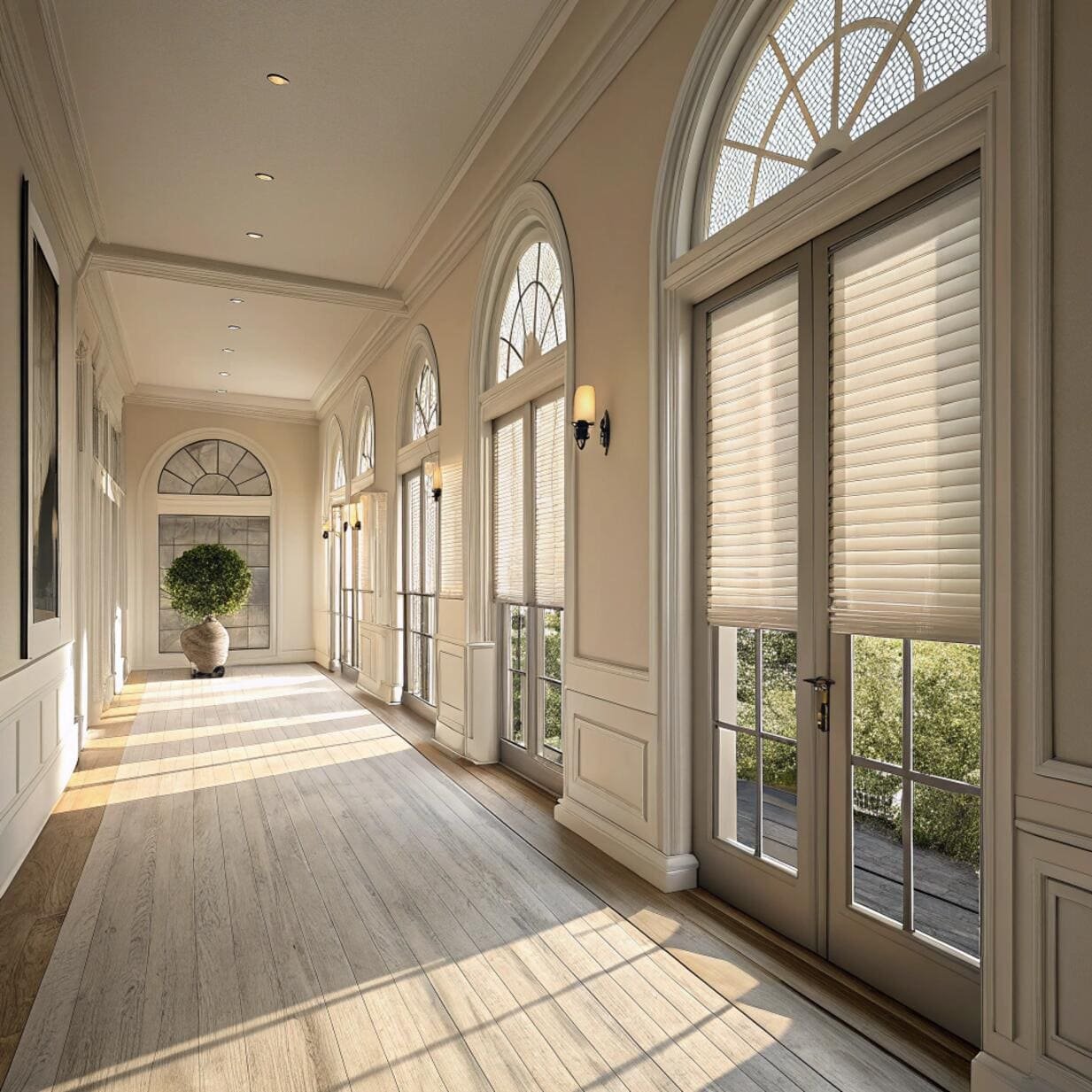
Inside mount advantages center on aesthetic integration and architectural preservation. The blind appears built-in rather than added, maintaining original window proportions and trim visibility. This integration particularly benefits traditional and historic properties where preserving original character is important.
Maintenance benefits include reduced dust accumulation and protection from accidental damage. The recessed position shields the blind mechanism from room activity while providing easier access for routine cleaning and adjustment.
However, inside mount limitations are significant. Window depth requirements eliminate many applications, particularly in older buildings or apartments with shallow window frames. Measurement precision becomes critical - small errors result in operational problems or complete reinstallation.
Light control limitations are inherent to inside mount configuration. The blind cannot extend beyond the window frame, creating inevitable light gaps that reduce privacy and energy efficiency. These gaps become particularly problematic in bedrooms or media rooms.
Outside mount advantages include superior light control through extended coverage and universal compatibility with any window configuration. The extended coverage eliminates perimeter light gaps while accommodating windows with insufficient depth for inside mount.
Installation flexibility allows for easier measurement and adjustment, reducing installation complexity and cost. The larger mounting surface provides more options for bracket placement and adjustment after installation.
Outside mount disadvantages include more visible hardware and potential aesthetic challenges. The blind extends beyond the window frame, creating a more prominent appearance that may overwhelm smaller windows or conflict with existing trim work.
Cost considerations favor outside mount for most applications. Lower installation complexity, reduced measurement precision requirements, and greater adjustment flexibility result in lower overall project costs and reduced failure rates.
| Factor | Inside Mount | Outside Mount |
|---|---|---|
| Aesthetics | Clean, integrated | More prominent hardware |
| Light Control | Limited (frame gaps) | Superior (extended coverage) |
| Installation | High precision required | More forgiving |
| Cost Risk | Higher (measurement errors) | Lower (adjustable) |
| Window Compatibility | Depth requirements | Universal fit |
| Maintenance | Protected position | More exposed |
Conclusion
Inside mount suits projects prioritizing clean aesthetics with adequate window depth, while outside mount delivers superior light control and universal compatibility for most applications.
Extended FAQ Section
What happens if I choose the wrong mounting method for my blinds?
Choosing the wrong mounting method can result in several costly problems that affect both function and appearance. Inside mount blinds installed in shallow windows may not operate properly, binding against window hardware or glass surfaces. The blind may appear cramped or create operational issues when windows are opened.
Outside mount blinds chosen incorrectly can overwhelm window proportions, particularly on smaller windows, creating an unbalanced appearance. If the blind is too large for the space, it may interfere with adjacent windows, furniture, or architectural elements.
Light control problems are common with wrong mounting choices. Inside mount blinds chosen for maximum light blocking will disappoint due to inherent frame gaps. Outside mount blinds installed where clean aesthetics are priority may look bulky and overwhelming.
Measurement errors compound with wrong mounting choices. Inside mount tolerances are much tighter than outside mount, so choosing inside mount without proper measurement capabilities often results in fit problems requiring complete reinstallation.
Cost implications include not just replacement blind costs but also labor, disposal of incorrect blinds, and potential wall or window frame repair. Professional remeasurement and reinstallation can double the original project cost.
The best approach is thorough evaluation before purchase. Measure window depth accurately, assess light control needs, consider aesthetic priorities, and evaluate installation constraints. Professional consultation can prevent costly mistakes and ensure optimal results.
How much does professional installation cost for inside vs outside mount?
Professional installation costs vary significantly between mounting methods due to complexity differences and precision requirements. Inside mount installation typically costs 20-30% more than outside mount due to measurement precision needs and increased installation complexity.
Inside mount installation requires more skilled labor due to confined working space and tight tolerances. Professional installers must work within the window frame, often requiring specialized tools and techniques. The precision required for proper fit increases labor time and skill requirements.
Outside mount installation offers more flexibility and faster completion. The mounting surface is easily accessible, bracket placement is more forgiving, and adjustments can be made during installation. This flexibility reduces labor time and skill requirements.
Cost factors include measurement services, installation complexity, and potential complications. Inside mount projects often require professional measurement services to ensure proper fit, adding $50-100 to project costs. Installation time can be 50-100% longer for inside mount, increasing labor costs proportionally.
Geographic location affects installation costs, with urban areas typically 20-40% higher than rural areas. Specialized motorized blind installation can add $100-200 per window regardless of mounting method.
Professional installation includes warranty coverage that DIY installation cannot provide. Most professional installers offer 1-2 year warranties on installation work, covering both labor and any installation-related issues.
Can I change from inside mount to outside mount after installation?
Converting from inside mount to outside mount is possible but requires careful planning and additional costs. The conversion involves different mounting hardware and may require wall preparation or repair work.
The conversion process involves removing existing inside mount hardware and installing outside mount brackets. This typically requires filling existing screw holes and potentially touching up paint or finish work. The blind itself can usually be reused if in good condition.
Cost considerations include new mounting hardware, installation labor, and potential wall repair. Professional conversion typically costs $75-150 per window, depending on complexity and wall condition. DIY conversion is possible but requires proper tools and wall repair skills.
Timing considerations favor conversion during renovation projects when wall work is already planned. Converting during routine maintenance or updating can be cost-effective, while emergency conversions due to installation problems are more expensive.
Aesthetic impacts should be evaluated before conversion. Inside mount blinds may not provide adequate coverage when converted to outside mount, requiring blind replacement for proper proportions. The existing blind size may appear too small when mounted outside the frame.
Professional evaluation helps determine conversion feasibility and costs. Many installers offer conversion services as part of their warranty support, particularly when original installation issues necessitate the change.
---
[^1]: Explore the advantages of inside mount blinds for a clean aesthetic and better integration with window architecture.
[^2]: Learn how outside mount blinds can enhance light blocking and cover architectural flaws for better functionality.
[^3]: Discover the key factors influencing light control performance to make an informed decision for your space.Partner with VelaBlinds for Your Next Project
Smart window treatments shouldn't be complicated. After working with 500+ distributors and contractors worldwide, I've streamlined the process to get you quality products, competitive pricing, and reliable support - every time.
Why project professionals choose VelaBlinds:
- ✅ Fast, Accurate Quotes - Detailed specs and pricing within 24 hours
- ✅ Transparent Pricing - No hidden fees, volume discounts clearly outlined
- ✅ Quality Assurance - Direct partnerships with certified OEM manufacturers
- ✅ Project Support - Dedicated account manager from quote to delivery
Start your next project:
📧 Quick Quote: Send your requirements to info@velablinds.com
📱 Direct Contact: WhatsApp +86 137 2012 8317
🌐 Browse Solutions: https://velablinds.com/
📁 Product Resources: Access spec sheets, catalogs & project files
Jimmy Chen, Founder
"I built VelaBlinds to solve the real challenges I faced as a project buyer - long lead times, unclear specs, and unreliable suppliers. Let's discuss how we can power your projects with smarter blinds."
Serving distributors and contractors across North America, Europe, and Australia since 2018.

